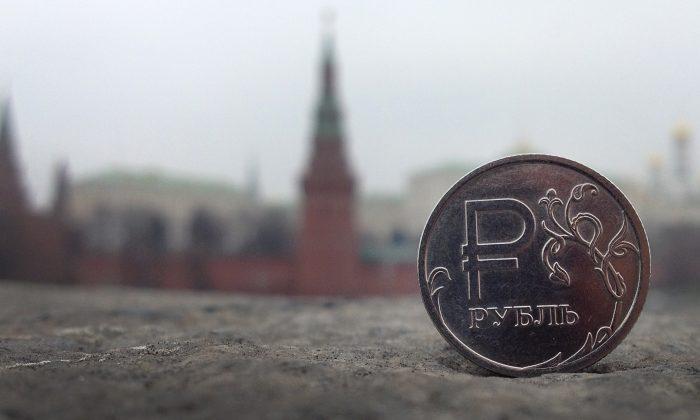Markets fighting central banks can be compared to a heavyweight boxer fighting a lightweight. The lightweight can place a few quick punches and wiggle around his slower opponent for a little while but will eventually get knocked out.
The Russian central bank is about to get knocked out by the force of the markets which are a lot bigger, despite still sizeable foreign exchange reserves ($385 billion at the current ruble rate).
On Nov. 10, it abandoned setting an upper and lower price band for the ruble (down 41 percent against the dollar this year), but didn’t completely give up yet.
“The ruble exchange rate will be determined by the market factors that should enhance the efficiency of the Bank of Russia monetary policy and ensure price stability.”
This, however, is wishful thinking which is why the CBR reserved the right to continue to prop up the ruble in case of a crisis—and crisis is where we are heading. Since Oct. 1 the CBR spent close to $14 billion dollars buying up rubles—to no avail.

This is not quite as bad as the Bank of England, which spent 15 billion British pounds in a single day 22 years ago and still lost, but it follows the same pattern.
Capital Flight
Russians and foreigners are selling the ruble hands over fist and not because the CBR is printing money like the Bank of Japan.
It is Western sanctions and the low price of oil which scares people out of holding assets denominated in rubles. The first asset class to suffer was stocks. The Russian economy and by extension exchange-traded equities will make less profits because of sanctions and there is a high risk it will get worse, not better. On top of that, low oil prices hurt Russian exporters.
Seventy percent of the Russian equity market is owned by foreigners. When they sell, they won’t keep the rubles lying around in a bank account in Moscow.
They take their money and run. As a result, the Russian stock market’s capitalization decreased from $800 billion in October of 2013 to $550 billion in October of 2014. This year, the RTSI index is down 25 percent.
The decrease in market capitalization of 31 percent would have wiped out $250 billion of foreign currency reserves alone if there hadn’t been any counterbalancing inflows.
Apart from foreign investment flows which used to go into the stock market, most of Russia’s ruble demand comes from oil and gas companies repatriating their dollars, the currency in which their commodities are priced.
They sell the good, get dollars in exchange and then change all or part of the proceeds to rubles. Because of the added risk, they now have every incentive to keep as much of their money in dollars as possible, further undermining ruble demand.
What Can Be Done?
Russia is under pressure to do something in order to reduce the inflationary pressures on imports, especially foods. The vast majority of the population can’t afford for food and other goods to become more expensive.
However, apart from getting the sanctions lifted, there is not much the country can do, especially after throwing the towel on interventions already.
Interbank interest rates are high at around 10 percent, after repeated hikes by the central bank. That sounds like a great rate, especially considering Russian banks are well capitalized and you don’t get anything like it in the West.
However, your yearly interest income can get eaten away in a day if the ruble keeps dropping like this, so the market isn’t lifting this offer.
The only solution left to the CBR would be to make rubles so scarce that natural buyers like Russian corporations who hold dollars would have to come back to the market and bid them up. However, by doing this it would have to contract credit and therefore crush economic activity.
The lightweight central bank is trapped in a corner and at the mercy of the market heavyweight. It will be lucky if it can get away with a bruising like the Bank of England did in 1992.






Friends Read Free